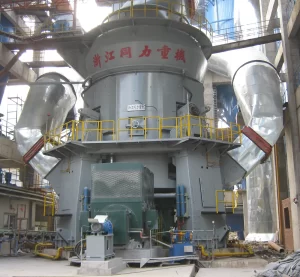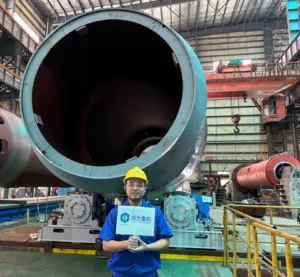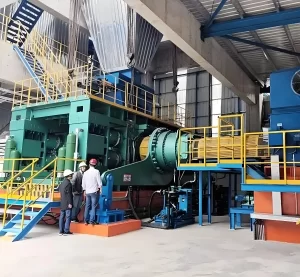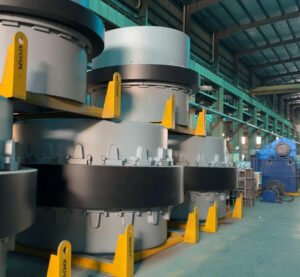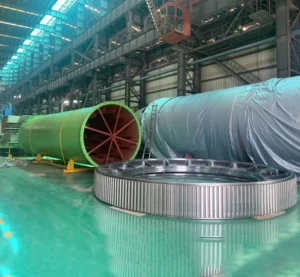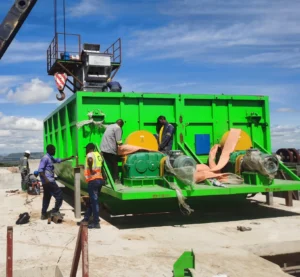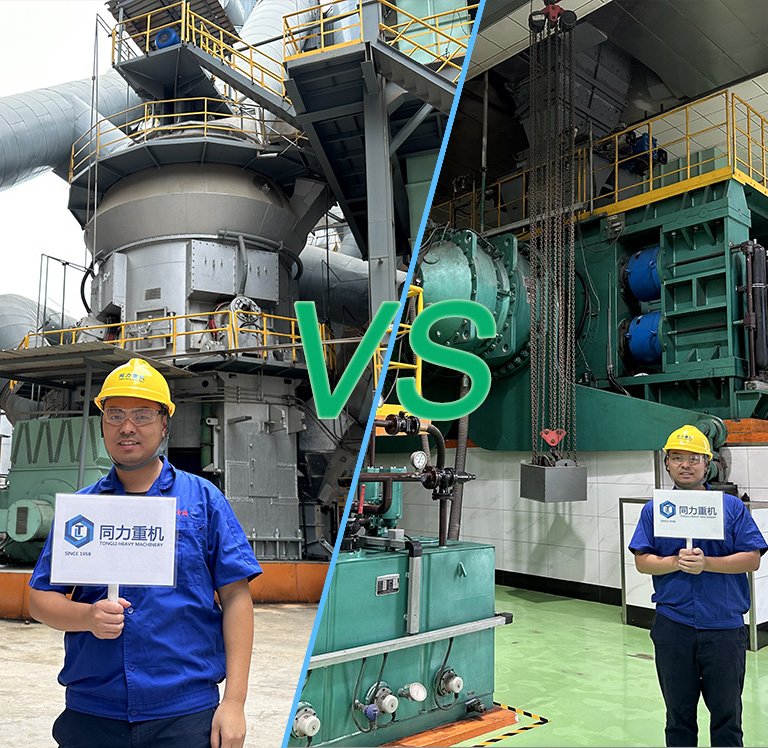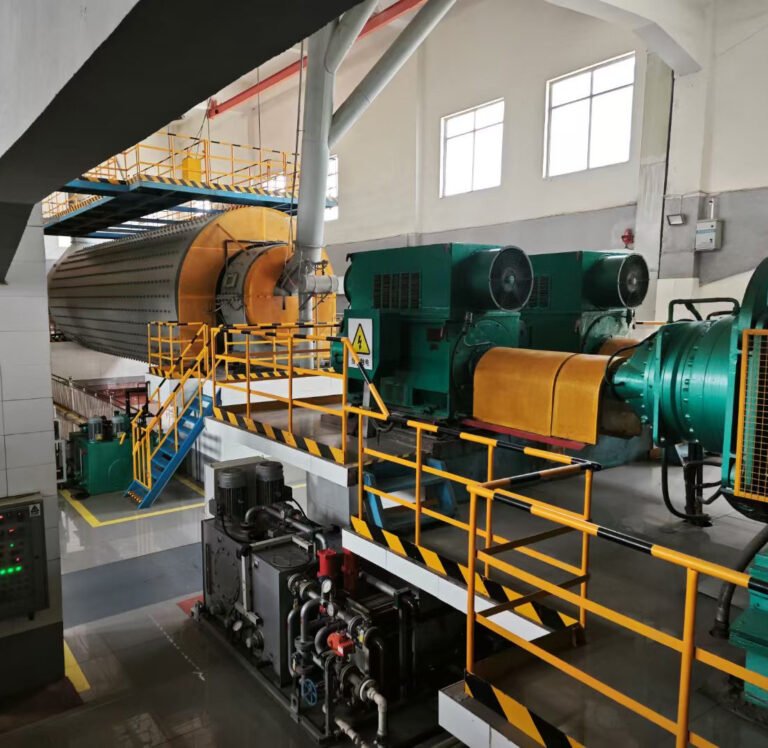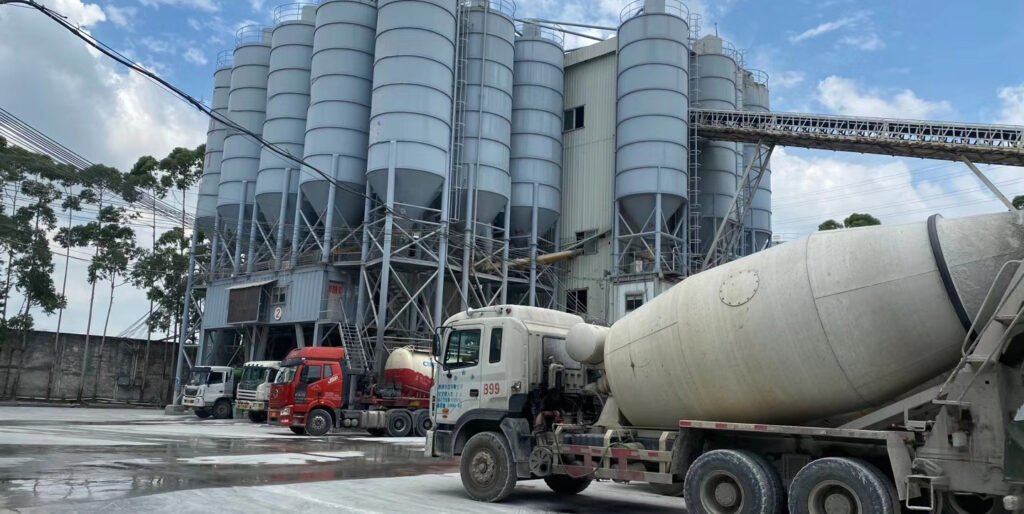
In the construction industry, concrete is the backbone of most projects. From skyscrapers and bridges to sidewalks and houses, concrete is an essential material. But where does this vital material come from? The answer is a ready mix concrete batching plant. Once solidified and formed, concrete is a strong and durable material that is strong enough to withstand some of the strongest forces of nature. However, concrete is "plastic" because it can be formed and molded into almost any shape before it hardens. After hardening, the quality of concrete depends on the properties of its mixture. Concrete does not form naturally, but needs to be obtained through specific treatment of its various components. This process involves mixing water, cement, sand and gravel in the right proportions to produce a durable concrete product. In fact, if there is even a little bit of excess paste or water in the mixture, the final concrete foundation will easily crack - conversely, rough concrete is caused by insufficient paste or water content in the concrete mixture. Obviously, any ordinary mixing technology will not work here, so special equipment is needed. Understanding what a ready mix concrete batching plant is and how it works can help construction professionals and contractors make informed decisions for their projects.
What is a ready mix concrete mixing plant?
A "ready mix" concrete mixing plant, also known as a "batching plant" or "mixing plant" for short, is a construction application equipment that is specially used to mix coarse aggregate, sand, cement and other admixtures to produce homogeneous concrete. The final mixture can be widely used in the construction of skyscrapers, sidewalks, bridges, residential buildings, highways, airports, etc. The capacity of a concrete mixing plant ranges from 25 cubic meters per hour to 240 cubic meters per hour, which depends largely on the type and design of the concrete mixing plant. For example, the size of a fixed mixing plant is usually larger than that of a mobile mixing plant. Concrete ready mixing plants are highly mechanized, automated and efficient, which can ensure the quality of concrete and save cement costs. A ready mix concrete mixing plant is mainly composed of five systems, including a mixer, a material weighing system, a material conveying system, a material storage system, a control system and other ancillary facilities. Because floor aggregate metering reduces four intermediate links compared to in-station aggregate metering, and is vertical drop metering, metering time is saved and production efficiency is greatly improved. Generally speaking, concrete mixing plants can be divided into many types according to different criteria, such as capacity, cost, purpose, structure, layout, number of mixers, etc. Common types of concrete mixing plants include mobile concrete mixing plants, stationary concrete mixing plants, small concrete mixing plants, etc. What are the differences between various types of concrete mixing plants? Do you have any problems choosing a suitable concrete mixing plant for your project? The following will introduce you to more details of concrete mixing plants and analyze the most popular types of concrete mixing plants on the market.
Workflow of a "ready mix" concrete batching plant
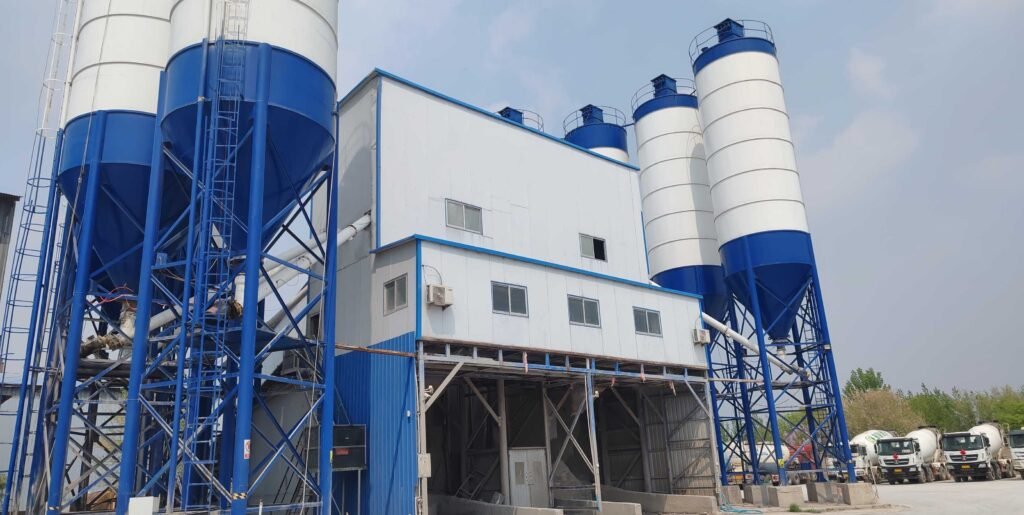
The production process of a concrete batching plant consists of several steps. First, cement, water, sand and gravel are measured and poured into their respective hoppers or silos. Then, these materials are transported to the mixing unit by conveyor belts or manually. In the mixing unit, these materials are mixed and stirred until a homogeneous mixture is formed.
After the concrete is mixed, it is loaded into trucks or concrete mixers and transported to the construction site. The entire process is controlled by a computer system to ensure the precision and accuracy of the batching process. The following is a detailed operation process of a batching plant:
1.Material loading
The wheel loader loads aggregates of various specifications into the concrete batching machine.
2.Batch processing
- Aggregate batching: The concrete batching machine batches various types of aggregates according to regulations, and then the aggregates enter the concrete mixer through the hopper;
- Powder batching: The cement silo stores the required powders: cement, fly ash, which will enter the powder weighing system and be unloaded into the mixer;
3.Mixing
The mixture (aggregate, cement, water and additive mixture) is mixed in the mixing device to ensure that the components are fully mixed to form a uniform concrete. The aggregate loading, weighing, mixing and unloading operations are completed to form a complete mixing cycle.
4.Unloading
After mixing, the freshly mixed concrete is unloaded from the mixer truck into the mixer truck for transportation to the construction site. During transportation, the mixer truck will constantly turn over the tank to prevent concrete segregation.
5.Pumping
The last step is to pump the concrete to the area where concrete needs to be poured. In order to complete the concrete project, we need to use a concrete pump truck at this time.
The quality of concrete depends on factors such as the water-cement ratio and the uniformity of the mix. Most modern factories use automated production to ensure consistency and precision throughout the production process.
Types of Concrete Batching Plants
1.By mobile mode
Mobile rmc concrete mixing plant
Mobile concrete mixing plant can be moved as needed, without the need for fixed installation on site. Mobile mixing plant is generally towed by a trailer, with simple structure, compact size, good mobility, detachable, easy to transport and install, and can be quickly deployed to the required project site, eliminating the geographical restrictions of construction. Concrete mixing plant is suitable for projects that require frequent transportation, such as road, railway and bridge construction.
- Advantages: Strong mobility, suitable for short-term, frequent transfer projects, short installation and disassembly time.
- Disadvantages: Production capacity is usually not as good as fixed mixing plant, suitable for small and medium-sized projects.
Fixed concrete mixing plant
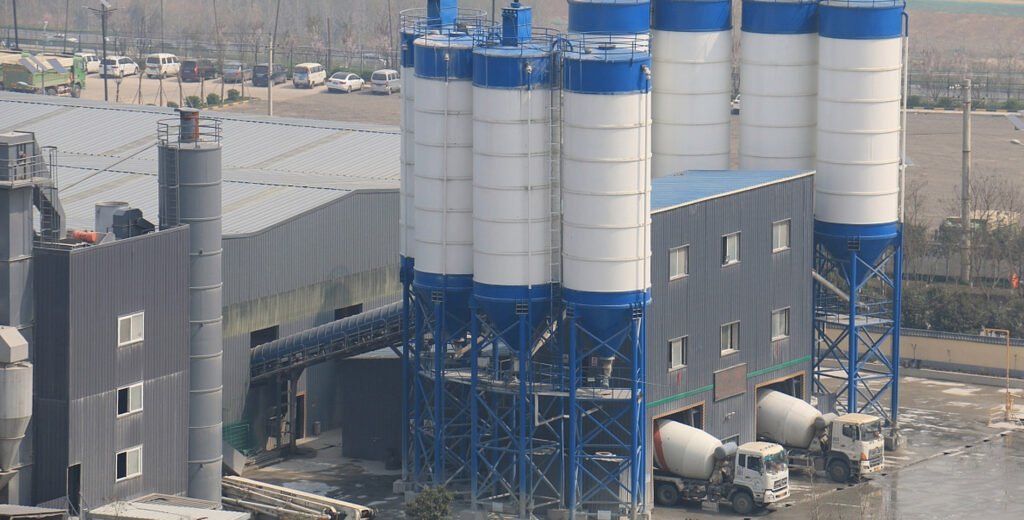
Fixed concrete mixing plants are usually installed in fixed sites and equipped with large storage facilities and conveying systems. Fixed concrete mixing plants have high production efficiency and durable and efficient design. Fixed concrete mixing plants are suitable for large-scale construction sites and concrete production companies with large engineering volumes.
- Advantages: strong production capacity, stable equipment, suitable for long-term, large-scale concrete production.
- Disadvantages: inconvenient transfer, suitable for long-term fixed projects, and high initial investment.
2.By capacity
Small concrete mixing station
Small concrete mixing station or micro concrete mixing station is suitable for projects with relatively small construction area, uncomplicated process and small construction scale, such as residential areas below the second floor, underground parking lots, roads, bridges, etc. The monthly production capacity of a small mixing station is generally around 1,000 cubic meters, with the advantages of convenient loading and unloading of equipment and flexible parking.
- Advantages: low cost, small equipment footprint, simple operation.
- Disadvantages: limited production capacity, difficult to meet the needs of large-scale production.
Medium-sized concrete mixing station
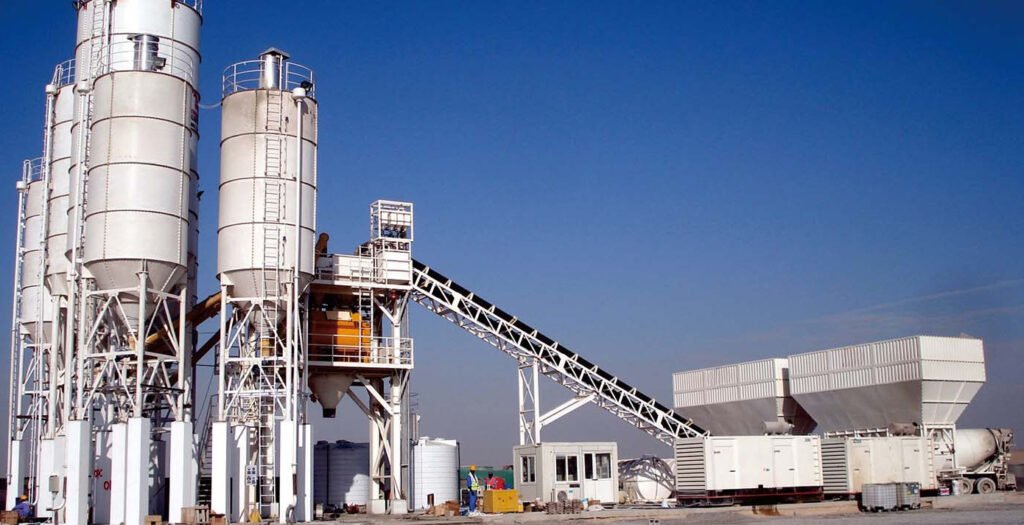
Medium-sized concrete mixing station is suitable for projects with large construction area, complex construction technology and moderate construction scale, such as multi-storey residential buildings, commercial buildings, water conservancy projects, etc. The monthly production capacity of medium-sized mixing station is about 2000-5000 cubic meters, with advantages such as high production efficiency and good stability.
- Advantages: It has a certain production capacity, can meet the needs of medium-sized projects, and the equipment is fully functional.
- Disadvantages: Cost and maintenance requirements between small and large mixing stations.
Large concrete mixing station
Large concrete mixing station is suitable for large commercial plazas, high-rise residential buildings, highways, large bridges and other engineering projects with large construction area, large engineering volume and tight construction period. The monthly production capacity of large concrete mixing station can reach more than 10,000 cubic meters, with high production efficiency, good stability and high degree of automation.
- Advantages: Strong production capacity, can meet the needs of large-scale concrete, and high degree of automation.
- Disadvantages: High initial investment, large equipment footprint and complex maintenance.
3.According to the concrete mixing method
Gravity concrete mixing station
This type of concrete mixing station uses pouring and drip irrigation to mix materials, which is suitable for concrete with good fluidity. Gravity concrete mixing station has a simple structure and low manufacturing cost, but the mixing efficiency is low. Self-unloading concrete mixing station is suitable for small projects with low requirements for concrete quality (such as rural roads, civil buildings, etc.). Due to its low cost and easy operation, self-unloading mixing station still has a certain market, but its market share is gradually being eroded by more efficient forced mixing stations.
- Advantages: simple structure, easy operation, low cost, suitable for small projects.
- Disadvantages: poor mixing quality, low production efficiency, and difficult to meet the needs of high-standard concrete production.
Forced concrete mixing station
This type of concrete mixing station uses rotating mixing blades to force mixing materials, which is suitable for concrete of various fluidity and density. Forced concrete mixing station has high mixing efficiency, but the manufacturing cost is also relatively high. Forced concrete mixing station is suitable for large-scale infrastructure construction projects such as bridges, high-rise buildings, airports, etc. that have high requirements for concrete uniformity and quality. Forced mixing plants are the mainstream choice in the market, especially for medium and large projects, and are widely favored for their high production efficiency and good concrete quality.
- Advantages: Good mixing uniformity, suitable for producing high-quality concrete. High degree of automation, saving manpower.
- Disadvantages: Complex equipment, high maintenance costs, and large initial investment.
Components of a Concrete Batching Plant
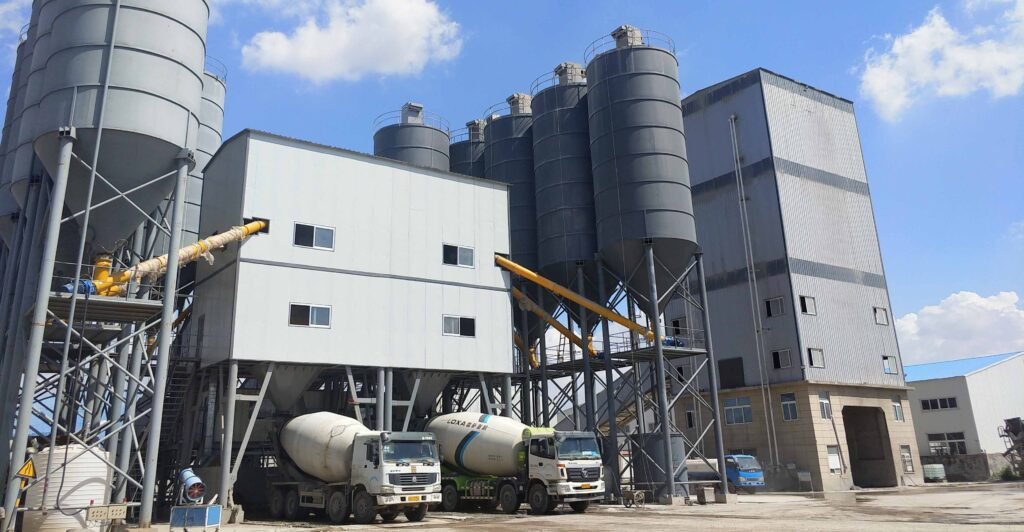
A typical concrete batching plant consists of several components that work together to efficiently produce high-quality concrete. These components include:
Mixing system
The mixer is a very important part of the concrete mixing plant, usually using a twin-shaft forced mixer. The mixer of the concrete mixing plant has the characteristics of high mixing efficiency, good mixing uniformity, and strong wear resistance. The main function of the mixer is to mix cement, aggregates, water and other materials to form uniform concrete.
Weighing system
The material weighing system is responsible for accurately weighing various materials according to the set mix ratio. The system is usually composed of electronic scales, sensors, controllers, etc., which can achieve accurate measurement of various materials such as cement, aggregates, water, etc. to ensure the stability of concrete quality.
Conveying system
The material conveying system includes aggregate conveying, cement conveying, water conveying and other parts. Aggregate conveying usually uses a belt conveyor or bucket elevator to convey aggregates from the silo to the mixer; cement conveying generally uses a screw conveyor or a pneumatic conveying system to convey cement from the cement silo to the mixer; water conveying is achieved through water pumps, pipelines, etc.
Storage system
The material storage system includes cement silos, aggregate silos, additive silos, etc. These warehouses usually use steel structures or reinforced concrete structures, with sufficient strength and sealing performance to ensure that the materials are not damp, agglomerated, or contaminated during storage.
Concrete mixing station control system
The control system is the brain of the concrete mixing station, responsible for the operation and control of the entire mixing station. The control system usually uses a PLC programmable controller or a touch screen control system, which can realize automatic and intelligent control and improve the operating efficiency and stability of the mixing station.
RMC Concrete Mixing Plant Specifications
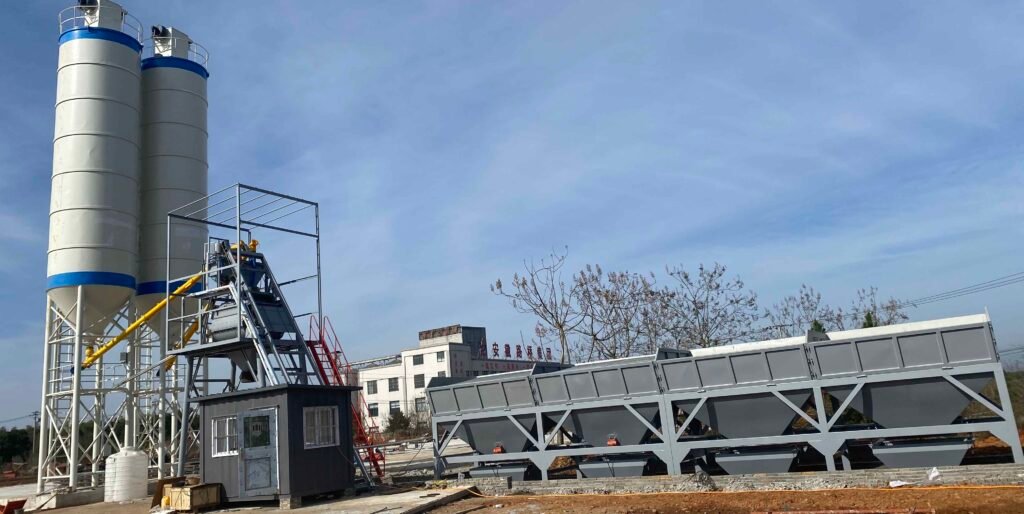
Concrete mixing plant is a new generation of concrete mixing equipment, adopting the internationally popular modular rapid assembly structure, high-performance imported or domestic mixing host, dual-machine dual-control computer control method, anti-noise, anti-dust pollution, green environmental protection design. The specifications of concrete mixing plant are named according to their theoretical output per hour. Common specifications include: ZJTL35, ZJTL50, ZJTL60, ZJTL75, ZJTL90, ZJTL120, ZJTL150, ZJTL180, ZJTL240, etc.
| Model | ZJTL35 | ZJTL50 | ZJTL75 | ZJTL90 | ZJTL120 | ZJTL180 |
| Productivity | 35 m³/h | 50 m³/h | 75 m³/h | 90 m³/h | 120 m³/h | 180 m³/h |
| Standard Discharge Height | 1.6 – 3.8 m | 2.7 – 3.8 m | 2.7 – 3.8 m | 3.8 m | 4.0 m | 4.0 m |
| Work Cycle Time | 72 s | 72 s | 72 s | 60 s | 120 s | 180 s |
| Dimensions (L × W × H) | 12922 × 13000 × 17245 mm | 14950 × 17840 × 17245 mm | 15950 × 18840 × 17245 mm | 51093 × 19100 × 21600 mm | 55885 × 20200 × 21600 mm | 51210 × 6600 × 23700 mm |
| Total Installed Power | 75 kW | 115 kW | 120 kW | 145 kW | 210 kW | 260 kW |
| Mixer Model | JS750 | JS1000 | JS1500 | JS1500 | JS2000 | JS3000 |
| Batching Machine Model | PLD1200 | PLD1600 (Single Hopper) | PLD2400 | PLD2400 | PLD3200 | PLD4800 |
| Air Compressor Model | 1.0-7 | 1.0-7 | 1.0-7 | 1.8-7 | 1.8-7 | 1.8-7 |
| Rated Displacement | 1.67 m³/min | 1.67 m³/min | 1.85 m³/min | 1.67 m³/min | 1.67 m³/min | 1.67 m³/min |
| Rated Discharge Pressure | 0.8 MPa | 0.8 MPa | 0.8 MPa | 0.8 MPa | 0.8 MPa | 0.8 MPa |
| Motor Power | 5.5 kW | 5.5 kW | 11 kW | 11 kW | 15 kW | 18.5 kW |
| Aggregate Weighing Accuracy | ±2% | ±2% | ±2% | ±2% | ±2% | ±2% |
| Cement Weighing Accuracy | ±1% | ±1% | ±1% | ±1% | ±1% | ±1% |
| Water Weighing Accuracy | ±1% | ±1% | ±1% | ±1% | ±1% | ±1% |
| Additive Weighing Accuracy | ±2% | ±2% | ±2% | ±2% | ±2% | ±2% |
RMC Concrete Mixing Plant Cost
In order to help customers better understand the cost of concrete mixing plants, we have prepared an investment profit and loss statement based on a medium-sized concrete mixing plant project for reference.
A set of 180 cubic meters of concrete mixing plant equipment has good investment profitability, with an annual output of about 360,000 cubic meters of concrete (8 hours of work per day, assuming 300 working days per year). Based on an annual sales volume of 180,000 cubic meters, it can generate a profit of about 15.53 million yuan per year.
| Item | Unit Price | Quantity | Total Amount |
| Annual Operating Revenue | ¥320 / m² | 180,000 m² | ¥57.60 million |
| Material Cost | ¥200 / m² | 180,000 m² | ¥36.00 million |
| Energy & Maintenance Cost | ¥12 / m² | 180,000 m² | ¥2.16 million |
| Labor Cost | ¥45,000 / person | 10 persons | ¥0.45 million |
| Business Tax | 6% | — | ¥3.456 million |
| Annual Operating Profit | — | — | ¥15.53 million |
Application scenarios of concrete mixing stations
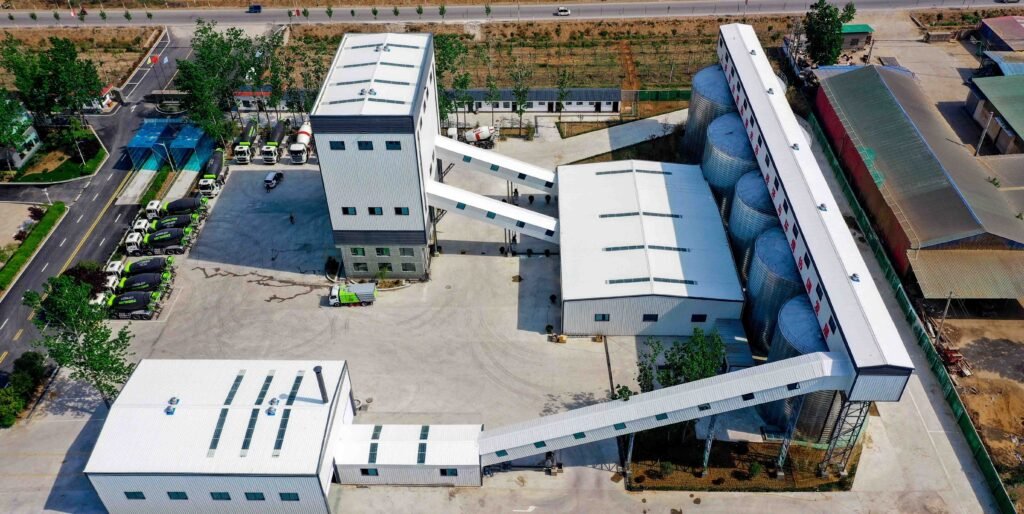
Concrete mixing stations are commonly used in large and medium-sized infrastructure construction projects such as ready-mixed concrete, roads and bridges, water conservancy, airports, ports, and places with large concrete demand, long construction period, and concentrated construction sites.
Construction Engineering
Concrete mixing stations are widely used in construction projects, mainly used to produce building materials such as concrete blocks, concrete beams and columns, concrete slabs, and concrete floor slabs. Concrete mixing stations can produce high-strength and high-quality concrete materials to ensure the safety and quality of construction projects.
Road Engineering
Concrete mixing stations are mainly used in road engineering to produce road construction materials such as concrete pavements, concrete drainage ditches, and concrete slope protection. Through the production of concrete mixing stations, the high strength and high quality of road construction materials can be guaranteed, and the service life and safety performance of roads can be improved.
Bridge Engineering
Concrete mixing stations are mainly used in bridge engineering to produce building materials such as concrete piers, concrete bridge buffer pads, and concrete bridge decks. Through the production of concrete mixing stations, the high strength and high quality of bridge construction materials can be guaranteed, and the service life and safety performance of bridges can be improved.
Water Conservancy Project
Concrete mixing plants are widely used in various water conservancy projects, including dam construction, water conservancy channels, hydropower station construction, embankment construction, river regulation and other applications. Concrete mixers can greatly improve the efficiency of concrete pouring and shorten the construction period.
Is concrete mixing plant the same as cement plant?
Concrete mixing plants and cement grinding plants play different but interrelated roles in the cement and concrete production chain. The core function of a vertical roller mill cement grinding plant is to grind cement clinker with mixed materials such as gypsum to produce finished cement. This is a key intermediate link in the production process, and the quality and performance of the cement produced directly affect subsequent applications. A concrete mixing plant mixes cement, aggregates (such as sand and stone), water and admixtures in a specific ratio to produce finished concrete products, mainly serving terminal needs such as construction. The connection between the two is that the product cement of a cement grinding plant is the main cementitious material of a concrete mixing plant. Without the cement provided by a cement grinding plant, a concrete mixing plant cannot produce qualified concrete.
FAQ: Frequent asked question/people also ask
Yes, modern concrete batching plants are designed to accommodate a variety of concrete mix designs to meet different construction needs. Control systems allow operators to input specific ratios of aggregates, cement, water, and admixtures, allowing the plant to precisely produce custom mixes.
Concrete batching plants ensure consistent quality by automating the metering and mixing processes. Advanced control systems closely monitor ingredient ratios, mixing times, and other parameters, reducing human error and deviations. This precision ensures that each batch of concrete meets the required strength, durability, and other performance standards.
Concrete batching plants prioritize safety through a variety of measures. These measures include safety guards on moving parts, emergency stop buttons, proper ventilation systems to reduce dust and fumes, and employee training on plant operations and safety procedures. We strictly adhere to occupational health and safety standards to ensure a safe working environment for plant operators and personnel.
Yes, concrete batching plants can be integrated with other construction equipment such as concrete pumps, mixers, and conveyors to streamline the construction process. This integration allows for seamless delivery of fresh concrete to the construction site, increasing efficiency and reducing manual work.
Concrete batching plants play a vital role in project scheduling by providing a steady and reliable supply of concrete. By precisely controlling production, construction companies can better plan and manage concrete needs, minimizing delays and ensuring projects are completed on time.
Conclusion
So let's summarize everything above, concrete can be mixed in many different ways. The concrete ready-to-mix production method you adopt depends on your costs, project schedule, and the quality of concrete products you expect. Understanding the step-by-step operation of a RMC concrete batching plant can help you optimize production, reduce downtime, and ensure consistent quality. Whether you are building a batching plant or planning to purchase one, understanding how it works is essential to making an informed decision. If your project requires precise and reliable large-volume concrete production, investing in a stationary concrete batching plant is a smart move. Its high efficiency, scalability, and long-term performance make it a must-have for modern construction.

